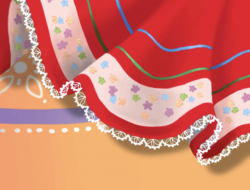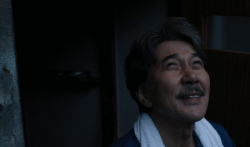Sex can mean love, lust, obsession or even violence and domination. Plenty of movies explore the motives behind sex, but in The Brown Bunny, Vincent Gallo, the film’s writer, director, producer and lead actor, makes all these forces collide within the context of one relationship. Though the film has received much press for an all-too-real oral sex scene that blurs the line between pornography and mainstream media, it also presents a poignant yet harrowing love story.
After a road race in New Hampshire, Bud Clay (Gallo) loads up his Honda motorcycle and heads for his California home. Although he leaves behind mountains, sleazy motels and three shallow and disingenuous attempts at love, he holds on to the memory of the last time he saw Daisy (Chloe Sevigny), who seems to be the one true love of his life.
The majority of the film is composed of images of Bud alone, defenseless and unprotected in front of the camera. Gallo’s angular bone structure, deep set eyes and dark, greasy hair present a harsh appearance, but he seems vulnerable as he tangles his fingers in his hair and his skin glistens with sweat. Despite his prominence, though, the viewer never gets a direct look at Bud’s face; the camera cuts off shots at his nose or shows his hand covering his face. The cinematography is used to endow Gallo’s character with a torn, distant and meditative demeanor.
The movie reaches a startling climax with Bud and Daisy meeting in a motel room in Los Angeles. While previous segments of the film move at a slower pace, the end is marked by a sudden outpouring of information and images. It is also during this final scene in the hotel room that Daisy’s much publicized and controversial “performance” occurs.
It should be clear that Gallo has not created a traditional love scene. The graphic sex is more in the vein of Halle Berry’s performance in Monster’s Ball or Jennifer Connelly’s explicit and distinctly un-erotic sex scene in Requiem for a Dream. Raw, gripping and slightly repulsive, the scene is consistent with the rest of the film. Above all, it is Daisy’s apology to Bud, an act of penance and a promise to be faithful to him. He does not look for her to be his soulmate, he merely desires to possess her. Afterwards, as Bud and Daisy lie next to each other in bed and recount their previous evening together, a frigid and frightening aspect of Bud’s personality surfaces. The details of that evening provide an emotional shock on par with the sex that preceded it. Their dialogue also confirms that the fellatio is far from gratuitous sex; this one-sided sexual pleasure accentuates and mirrors the Bud-centric lens through which the movie addresses his character.
The film is, in a very literal sense, a reflection of Gallo’s vision. Gallo filmed the movie watching himself act on monitors just outside of the camera’s view, which accounts for some of the stranger shots. The fellatio scene is no exception. While this narcissism is ever-present, it is also central to the movie’s theme.
The Brown Bunny’s finer details are not presented through traditional vehicles of narrative or sound. Critics who complained of a slow, even non-existent plot, seem to have missed some genuinely artistic elements in the film’s imagery and sound effects. The significant photographic element of this film should not be ignored. While there is little dialogue until the end of the film, the images speak for themselves. Whether capturing empty highways or desolate neighborhoods, this depiction of a cross-country trip portrays the same lonely isolation and mystifying quality that haunts Bud. Considering the emotion these images conjure, the viewer needs the moments of staring at endless road to grapple with the film’s message. Nevertheless, the images can get tedious, which Gallo acknowledged after showing the movie at the Cannes Film Festival by cutting The Brown Bunny by 26 minutes.
Whether Bud Clay represents the modern individual condemned to mechanical sex, like T.S. Eliot’s The Waste Land, or serves as a reflection of the male condition at the intersection of love, sex and possession, The Brown Bunny is Gallo’s brutal depiction of one man’s tragic reality.
Visions Theater, located in Dupont Circle, shows independent films featuring sex, drugs and the Taliban. 1927 Florida Ave. N.W.




